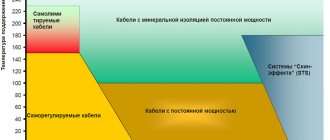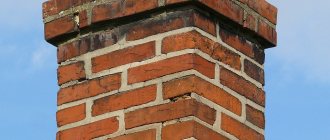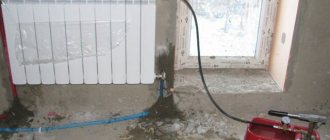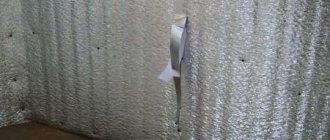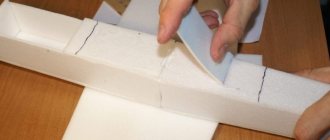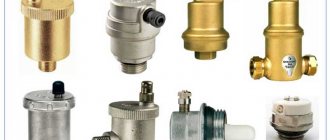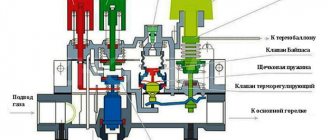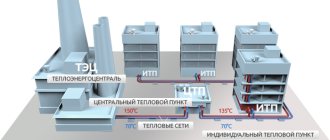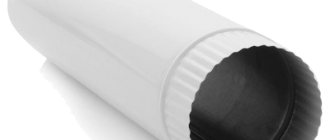What is a diffuser?
A diffuser for a ventilation system is a device that has the shape of a lattice on the outside. The purpose of this unit is to uniformly distribute the incoming and outgoing air masses of the room. There are three types of devices that help dissipate air flows:
- Supply;
- Exhaust;
- Supply and exhaust (universal);
Diffusers in air conditioning
The purpose of such devices is to uniformly distribute air flows from an air conditioner or fan through air ducts into the room.
Difference between diffuser and vent grille
The difference between these devices is only in the design and intensity of air movement.
During the calculation and design of air flow dispersion equipment, air circulation is taken into account. Therefore, the arrangement of the blades and partitions of the structure is carried out so that the air flows are mixed as efficiently as possible and evenly distributed throughout the space of the room.
A diffuser, like ventilation grilles, promotes a more intense flow of air to the air ducts from the air conditioner, but does so in a slower and smoother manner.
Floor diffusers
Floor ventilation grilles deserve special attention. They are installed in places where they are least subject to mechanical stress, and are also made exclusively of metal. It is prohibited to place floor diffusers directly under the workplace. The ventilation device must be located at least 40 cm from it. The air supply is carried out due to excess static pressure, which is formed in the underground space, or in a chamber specially designed for this purpose. The advantages of this type include: extremely low noise level, uniform temperature distribution throughout the service area. Most often, this type of diffuser is used for ventilation of rooms in theaters, auditoriums, concert halls, etc.
What is it used for and how does it work?
Quite a lot of requirements are placed on the ventilation system installed in a house or apartment. One of those devices that make the atmosphere in a room comfortable is a ventilation diffuser. The table shows all the characteristic functions for such a device.
| Eliminating drafts | When the air flow entering a room forms a single stream, this promises the appearance of strong drafts, which do not have a very good effect on health, especially for those who do not have a strong immune system. This phenomenon can be eliminated by a ventilation deflector, which ensures that the air diverges and the flow is dispersed. |
| Air flow distribution | Ventilation also becomes more efficient thanks to the ventilation diffuser. The disadvantage of ventilation in rooms not equipped with a diffuser is that only a certain part of the room through which air flows passes can be ventilated, because the air flow is jet. Using a diffuser, you can make the stream disperse and distribute the air evenly throughout the entire volume of air space in the room. This can happen in several ways; the most popular models are those that have a dissipative operating principle or that operate on the vortex principle. A device such as a ventilation deflector can reduce the speed at which air masses pass through a flexible air duct, or increase the speed after entering the hood. |
| Hood modernization | A ventilation diffuser also helps to disperse air flows if it is built into an exhaust-type ventilation system. Without a diffuser, such a design, despite the fact that it creates a vacuum of air masses, still forms jets of air that are unfavorable for the atmosphere in the room. Moreover, the amount that can enter the exhaust hole depends on how much the direction of the air flow has changed. The greater the change in flow, the less air masses will pass into the ventilation. The diffuser copes with this task too. |
| Process control | Installing a diffuser involves the ability to control the air flows that enter or leave the room by configuring the operation of the diffuser using a special remote control. This function provides additional comfort and prevents drafts or poor ventilation. Plus, the device eliminates noise that can be emitted due to strong air masses that “walk” around the room. |
Such a device is mainly represented by a design that has a different shape (this can be chosen depending on desires and needs), the material can also vary, and in addition is equipped with a special rubber gasket material that ensures tightness. If the ventilation diffuser is purchased as a supply type, its design is equipped with an air guide ring and an impeller. Some design elements and functionality depend on the type of ventilation diffuser.
Thread distribution
Each manufacturer produces devices of different shapes and air distributor designs. There is no strict classification of diffusers according to air flow characteristics, but they can be divided into the following types:
- Slotted - flow distribution passes through several slits, as in gratings.
- Jet - air is supplied in one or more jets of high speed and over long distances.
- Perforated - their surface has a large number of small holes through which air enters or is removed from the room evenly and at low speed.
- Vortex - the slots in them are located in such a way that air enters the room, twisting in the form of a funnel.
- Linear – elongated in shape with a small number of slots.
We recommend that you read: How to choose ventilation grilles for external ventilation
There are other types for narrow applications or for specific systems.
Perforated diffuser
Device and principle of operation
Each ventilation system operates according to a standard principle.
- Clean air from the street enters the room using fans or natural conditions (for example, temperature or pressure differences).
- Air is supplied through various air ducts (both hard and soft types).
- Uniform distribution of air throughout the rooms is organized using special devices - diffusers.
There are two main tasks that ventilation distributors cope well with:
- supplying and removing air from rooms;
- mixing air flows in order to create optimal humidity and temperature in the room, as well as to ensure a healthy microclimate in the house.
By the way! Some diffuser models allow you to regulate the amount of fresh air supplied, as well as completely shut off its supply if necessary. And that's all - in addition to the basic functions.
Modern diffusers look attractive, and a wide variety of models allows you to choose those devices that will optimally fit into any interior.
Air mass distributors have their own advantages, including:
- ease of installation;
- ease of maintenance;
- long service life;
- regulation of the direction and strength of air flow;
- efficient operation that eliminates air stagnation in the room;
- versatility - can be used both in small living rooms and in huge warehouses.
Diffusers have one drawback: under certain circumstances, drafts can occur. But their advantages are obvious.
Variety of shapes
When choosing a diffuser for your home, you need to know a number of their features that will help you choose the right model. Regarding the differences in shape, ventilation diffusers can be characterized by the following features:
- round diffuser;
- rectangular diffuser.
Help: regarding interior design, which will include diffusers, you can give preference to models with a round shape, because they are similar in appearance to lamp shades and this allows them to fit harmoniously into any design solution in the room.
The model range, divided in terms of shape, may have some of its own features in purpose:
- The fan-type diffuser has a built-in valve that controls the amount of air passing through, and is also equipped with special devices that allow you to install the device on the ceiling;
- The plate type is used extremely rarely, since it does not meet the requirements regarding the design of the premises;
- The slotted type is installed in order to adjust the direction of air flow. Considering the shape of such a diffuser, you can change the angle of the outgoing air flow. In addition, the device is small in size, and the boxes in which installation is carried out are very compact, which ensures that they are almost completely invisible in the wall or ceiling. Installation of these is also very simple, requiring only brackets and can be installed in a very small space.
The choice for further installation of a certain variety should depend only on the individual characteristics and desires of each person.
Difference in purpose
Based on the practical side of the issue of choosing and purchasing a diffuser for ventilation, we can characterize all its varieties as follows.
| Supply variety | This type of model is necessary in order to capture fresh air flows that come from outside and carry them into the atmosphere of the room through the ventilation system in a short period of time. |
| Exhaust variety | This type of ventilation diffuser operates on a similar principle to those varieties that remove air masses from the room. They ensure uniform distribution of air masses, which allows you to ventilate maximum areas of the living room. Due to the fact that the air stream passes through the diffuser, it becomes diffused and moves along a circular path, exiting outside. Such devices are also called vortex devices, since their operating principle allows different streams of air to be drawn into the ventilation from different points in the room. This provides an important point in removing the recycled air from their room. In addition, air is removed at a very high speed thanks to the diffuser. |
| Universal variety | This type of diffuser is capable of transmitting air flows in opposite directions. In this case, various air masses move between the outflow and inflow ventilation systems. |
| Nozzle variety | The nozzle variety allows you to create, if necessary, air flows with a narrow direction, namely a jet stream. This is necessary in cases where it is necessary to supply air masses to a distance at which laying a system for ventilation is not possible. |
In addition to standard diffusers intended for installation in a room ventilation system, simple grilles or blinds are often included; they are used to protect the ventilation system so that dirt and various kinds of objects do not get into it. Such devices also disperse the air masses passing through them.
There is also a type of diffuser that allows you to regulate the force and speed at which air is supplied or removed. This function is available thanks to the diffusers being equipped with a mechanical drive, which can be controlled remotely using a special remote control.
As for the variety of types, which is based on the material from which diffusers are made, they can differ in the following characteristics:
- Metal. The main metal used for manufacturing is aluminum or steel. This variety is characterized by a high level of strength and reliability during the operational period. In addition, the devices have an optimal design and are not prone to breakdowns. Their cost is slightly higher than similar diffusers made from plastic raw materials.
- Plastic. Among the advantages of ventilation diffusers that are made from such material, one can name such as non-susceptibility to corrosion processes and rotting processes. They are also very light and in terms of design their choice is much wider, because there are different color options.
Kinds
Several types of diffusers are available. They differ in their characteristics, materials from which they are made, and color.
They may have additional properties for use in various conditions, for example, increased moisture resistance. Let's consider all the points by which the models available on the market are classified.
Air flow direction
All diffusers are divided into supply, exhaust and supply and exhaust. The first two types of devices are most often used. The areas of application of air distributors are suggested by their names.
Supply models are installed to bring air into the room and move it evenly, while exhaust models remove waste materials. They differ in the positions of the partitions and blades. Universal devices work equally in both directions of air movement.
Material from which the elements are made
Air distributors can be made of plastic, metal (steel, aluminum) or wood (as a rule, the outer strip is made of this material).
Combinations of materials are often used, when, for example, the filling is made of metal, and the outer decorative part is made of wood. The choice of a specific model depends on the preferences of the owner, operating conditions, purpose of the room, interior design, as well as the material from which the air duct is made. An important factor is the price of the diffuser.
- A good budget option would be a plastic air distributor. Most often, these models are installed in offices and apartments. They are lightweight, durable, resistant to all kinds of external influences, do not rust, and are easy to maintain. In addition, air ducts are often also made of plastic, so joining the elements is not difficult. For various interiors, you can choose an option made of colored plastic.
Ceiling square
- Metal models, of course, are more durable, visually attractive and reliable. They are significantly heavier than plastic ones, which can create difficulties during installation. However, metal devices are indispensable for installation in premises that are subject to increased fire safety requirements. In some cases, the anti-vandal properties of such air distributors are important.
Round stainless steel ceiling
- Wooden models are perfect for rooms where wood is used for decoration, as well as for baths and saunas.
Wood
Device form
Air distribution grilles can be made in the shape of a circle, rectangle or square. The diameters of round models are usually 10...60 cm, and the dimensions of square devices can reach up to 90x90 cm.
Constructive
Depending on the design of the diffuser, there are several types of air distributors.
Nozzles
Such models are used in public and industrial premises of large dimensions, when there is a need to ensure the distribution of volumes of air masses and a high range. The low noise level allows these air distributors to be used in places with high demands.
Air distributor with adjustable nozzle
Diffusers are a housing with a movable or fixed nozzle located inside.
Diffuser with fixed nozzle
They can be installed individually or combined into blocks, which allows you to increase the length of the air jet. Such diffusers are made of anodized aluminum.
Linear nozzle diffuser
Slotted
The air distributors got their name because of the shape of the holes - in the form of slits. They are used for installation in rooms with ceiling heights from 2.6 to 4 m.
They have good aerodynamic performance. The number of holes can be from 1 to 6. The length of the structure is not limited, it can reach up to 3 m.
Diffusers can be adjustable (as a rule, this function is provided in supply models), which allows you to change the direction of the air flow, or not. Such devices are usually made of aluminum.
Slot diffuser
Vortex
Swirl diffusers are easy to recognize by their appearance - their jumpers have a radial arrangement. Their position can be adjusted manually or electrically.
In such models, blades or bridges allow the creation of turbulent vortices, which contribute to the rapid mixing of the supply air with the air in the room, and, accordingly, the accelerated distribution of the flow temperature. For installation in rooms where rapid air changes are required, vortex devices are most preferable.
Most often, such air distributors are installed in large rooms.
Vortex air distributor
There are also expensive options for supply and exhaust ventilation systems, in which the diffusers are equipped with active dampers, presence, temperature and control sensors. Such systems provide ventilation depending on the air temperature, the number of people present, and also optimize energy consumption.
Connection diagram for the climate control system
Designer diffusers
To decorate your interiors, you can install diffusers of various types, decorated with a variety of intricate patterns.
Air distributor, painted gold, illuminated
Let's look at some of the nuances of installing diffusers with your own hands (the instructions included with the devices will help you resolve some of the issues). The video will provide more information on this topic.
Varieties
There are a huge number of diffusers on the modern construction market. They are made from two materials: plastic and metal (steel or aluminum). Metal products are coated with paint in a variety of colors and are usually an order of magnitude more expensive than models made of plastic. It is very rare to find wooden diffusers on sale; they are usually made to order. Wooden models will fit perfectly into the interior of a country house, as well as saunas and baths.
Diffusers are classified according to:
- shape - round, rectangular and square;
- purpose – ceiling, floor, wall;
- principle of operation - displacing or mixing;
- device – external and internal.
It is also common to distinguish diffusers by the size and shape of the ventilation holes.
- Slotted. Usually has a rectangular shape with long and narrow holes. The slats can be positioned straight or at an angle, which allows you to regulate the air flow, directing it directly or in a certain direction. The lamellas are adjusted independently; some slot diffusers have the ability to adjust each blade individually. It is used both to supply fresh air and to remove old air. Slot models can be installed both on the wall and on the ceiling of the room.
To effectively use this type of diffuser, there are restrictions on the maximum permissible ceiling height - no higher than 400 centimeters, and the minimum - 260 centimeters.
- Nozzles. This type of diffuser is intended for large areas (for example, warehouses). The air mass enters inside in one powerful jet. Some nozzle-type air mass distributors can be equipped with adjustment of the direction of movement and angle of inclination.
- Disc-shaped. These are round diffusers. They are a frame with a circle fixed around it. The air supply is carried out due to the gap between the frame and the circle.
- Vortex. Equipped with blades that rotate like a fan and perfectly mix the air masses. The air passing through the vortex diffuser is twisted into a spiral and the speed of its movement increases significantly. Installed in rooms where a quick change of air is necessary (for example, a bathroom or toilet). To prevent drafts, all vortex models are equipped with a static pressure chamber
- Fan. They are represented by a whole complex of diffusers, which are combined into one system.
Low-speed diffusers stand apart. They work on the principle of displacing old air from the room. Clean air enters at low speed, which means the risk of drafts is minimal. In addition, the temperature of the fresh air differs by only a few degrees, which makes these diffusers one of the most comfortable. They can be wall-mounted, floor-mounted, or built-in. Widely used in museums, sports complexes, concert halls, cinemas. Very often they are mounted in stairwells and steps.
Ceiling diffusers are the most popular model, widely used in various conditions, including industrial ones. Floor-standing types of air mass distributors are usually used in conjunction with radiators or entire heating systems that are mounted on the floor.
Using a diffuser in these cases allows you to heat the room more efficiently and quickly reach a comfortable temperature.
Wall-mounted models are used very rarely, since ordinary ventilation grilles are usually installed on these planes.
Classification
Ventilation diffusers come in different types and are made from different materials. All products can be classified according to several factors: material, installation location, presence of regulation, geometric shape, air flow characteristics.
Round diffuser
Based on material, products are divided into the following types:
- Metal. Made from aluminum, painted or anodized, stainless or galvanized steel. They are distinguished by strength and durability. But when installing metal products in an air conditioning system, it should be borne in mind that due to the thermal properties of the metal, it cools quickly and drops of condensation may appear on it.
- Plastic. They are less expensive than metal ones, but in most performance properties they are no worse. They only have less strength and can be deformed when exposed to high temperatures. Made from PVC, polystyrene and other types of plastic.
- Wooden. They are used rarely and mainly on individual orders. Popular in baths and saunas, as well as for creating a specific design indoors.
Swirl diffuser
Depending on the direction in which the air moves, air distribution devices are:
- supply;
- exhaust;
- universal.
We recommend that you read: Insulation of ventilation pipes
Based on the installation site, all air distribution devices are divided into two large groups:
- wall:
- ceiling
There are also varieties of diffusers for floor mounting. But for these purposes, products of the two categories described above are mainly used. Ceiling diffusers mainly differ in the location of the slots and the ability to direct the flow to four directions.
There are special models of ceiling devices that are designed for installation in Armstrong-type suspended ceilings. They have a square shape measuring 60x60 cm and are mounted in a cell on the frame.
According to their geometric shape, products are divided into the following shapes:
- round;
- rectangular.
Round ones are sometimes confused with anemostats. But these are different products. The anemostat includes a disk with which the clearance for air supply is changed. Diffusers usually have multiple slots and in most cases they are not adjustable.
Jet diffuser
Also considered devices are:
- adjustable;
- unregulated.
In non-adjustable diffusers, the slits and other supply openings do not change their clearance and direction. For them, it is possible to use separate mechanisms that allow the regulation of products.
Criterias of choice
In order not to make a mistake when purchasing a diffuser, you should follow some recommendations when choosing it.
- The size of the ventilation system duct must correspond to the dimensions of the distributor and its dimensions.
- Think about the material of manufacture in advance. The most reliable option is metal.
- You should decide in advance on the model and color so that the diffuser fits perfectly into the interior.
- The selected model must meet sanitary, hygienic and fire safety standards.
- It is necessary to individually take into account and calculate the required cross-sectional area of the diffuser so that the noise level does not exceed permissible standards (not higher than 45-55 dBA). The optimal air speed in the distributor should be no more than 2 m/s.
It is also worth considering that ceiling or wall diffusers made of plastic are usually installed in residential and office spaces. Steel models are more suitable for production and warehouse premises.
In order for the diffuser to work effectively, it is also necessary to calculate its optimal dimensions based on the area of the building, the volume of air and the operating speed of the device. A special calculation scheme is used, which allows you to take into account all these nuances and select the right model.
Ceiling diffusers
Ceiling air distributors can be supply or exhaust. These devices differ in: design, shape, size, performance, air jet formation. In addition, diffusers differ in aerodynamic characteristics, air flow distribution, and the material from which they are made.
- The design of these devices consists of a decorative grille, behind which an impeller is attached (if the diffuser is a supply diffuser) and a static pressure chamber. Adjustable “shades” have elements that direct the air flow.
- Form. Most ceiling diffusers are round or square in shape. But we should not forget that slot air distributors are also considered ceiling-mounted, and they have a rectangular shape.
- The sizes of round air distributors vary from 10 cm to 60 cm. For square ones - from 15x15 cm to 90x90 cm.
- Installation method. They are installed in a suspended ceiling, embedded in a plasterboard panel or mounted in a suspended ceiling using additional rings.
- Ceiling diffusers form fan, turbulent, vortex, conical and nozzle air flows.
- The air distribution in these devices can vary on different sides (in square supply units) or be circular.
Most often, these devices are used in residential and office premises, shops, as well as restaurants and catering establishments.
Types of diffusers
In a store or company that sells ventilation equipment, you will be offered a large number of diffusers of different appearance and materials to choose from. Deciding on materials is more or less simple - choose what you like best or what is best suited for the operating conditions. If the ventilation ducts are made of metal, it is logical (although not necessary) to use metal grilles. They are galvanized, made of stainless steel, or made of ordinary steel, but painted with powder paint.
If the ventilation ducts are made of plastic pipes, they are better connected to plastic diffusers. Everything seems to be clear here. The rest of the parameters are a little more complicated, let's figure it out.
All these are diffusers
Place of use
According to their purpose, diffusers are divided into:
- inlet;
- exhaust;
- universal (supply and exhaust);
- combined.
The names speak for themselves: they are used in different parts of the ventilation system. Supply and exhaust differ in the direction and position of the lamellas and partitions. There is not too much of a difference, it’s just that some work better for air output, others for air input. In principle, you can put the supply air on the hood or vice versa. A disaster will not happen, but the performance of the ventilation system may drop slightly. In private houses and apartments, the difference, due to low productivity, is impossible to notice. Noticeable changes can only occur in high-capacity ventilation.
Universal diffusers allow air to flow equally in both directions. So you can install them without hesitation. But, as usual, “station wagons” perform a little worse than specially designed models.
This is how an adjustable supply diffuser works - it changes the direction and shape of the air flow
Explanations are needed only, perhaps, with combined models. They differ in that part of the device works for inflow, and part for outflow. Accordingly, they are connected to different parts of the ventilation system. That is, you can install only one universal diffuser on the ceiling, and it will need to be connected to two branches - supply and exhaust. The connection method is described in each specific model; in general there is no point in talking about it.
Materials
Diffusers are made from:
- plastics;
- aluminum;
- steel (regular or stainless).
In private houses and apartments, plastic ones are most often used. For this situation this is the best option. At a relatively low price, they have excellent performance characteristics, a long service life, are easy to maintain, and are not subject to corrosion. They easily fit into plastic air ducts, which are increasingly used in private homes.
Ceiling diffuser can be made of plastic, metal, with wooden elements
Metal diffusers are used in industrial premises where only non-combustible materials can be used. They cost significantly more, weigh more, which complicates installation.
There are also diffusers whose outer part (grille) is made of wood. Such devices will fit perfectly into the interior of a wooden house.
Location
Depending on their location, diffusers are:
- ceiling;
- wall-mounted;
- floor-mounted
Depending on the installation method, diffusers can be ceiling (most), wall and floor
The most commonly seen type is a ceiling diffuser. They are used in 95% of ventilation systems, both in supply and exhaust systems. Mainly because the air is mixed in the upper part of the room, without causing much discomfort to the person. And also because with the installation of false ceilings it is easier to create a ventilation system if it simply did not exist before. Most often, the devices are attached to the main ceiling, and a hole is cut out in the suspended/suspended ceiling, which is covered by a grille.
Sometimes supply ventilation is done through the basement. Then they install floor diffusers. This phenomenon is very rare.
Wall diffusers are used even less frequently. There are not many situations. For example, in apartments after replacing windows with plastic ones. In this case, an influx of fresh air is needed and this can only be provided by making a hole in the wall and installing a diffuser. Or if there is a lack of fresh air and there is no desire to build/reconstruct the supply system.
Next we will talk about ceiling diffusers, since they are the majority, and all the others still need to be looked for - they are usually delivered to order.
Diffuser types
Diffusers can be made of metal or plastic in the form of a lattice. In the first case, the ventilation grille has great mechanical strength and can be installed in any industrial premises, but it will be susceptible to corrosion. In the second case, the device has less weight and is not subject to corrosion, and also has a lower price.
Diffusers, depending on the form of execution, are divided into:
- round;
- square;
- rectangular;
- slot and disc diffusers.
Based on their location, they have the following classification:
- wall diffuser;
- floor;
- ceiling
Some types of diffusers have a built-in valve that allows you to regulate the volume of air passing through them.
Design features
Ceiling diffusers come in different designs. There are vortex and slot ones. These types can be made of any material, for any installation method. But, as agreed, we are talking about ceiling models.
Ceiling diffusers come in different designs
Vortex
In them, the grille partitions are located in such a way as to create turbulence in the air masses. This significantly increases the speed of air mixing and increases the performance of the system. They are easy to recognize - by the characteristic radial arrangement of the jumpers. A swirl ceiling diffuser is used where rapid air changes are required. It makes sense to install them in bathrooms and toilets to quickly restore a normal atmosphere, although they are usually used in rooms with a large area and high ceilings.
A swirl ceiling diffuser can be easily identified by its characteristic baffle arrangement
The internal part of a swirl ceiling diffuser is usually made in the form of a cylinder, and the grille can be anything - round or square, but the holes in it are located strictly along the circumference.
A swirl ceiling diffuser for supply ventilation may have an additional impeller, which is located behind the grille in the housing. The impeller can be movable or fixed. The movable impeller can be controlled - have several rotation speeds.
Another variety is with a static pressure chamber. It eliminates too active movement of air masses. When using ventilation diffusers with a static pressure chamber, even at high flow rates, there will be no drafts in the room.
Slotted
The slot ceiling diffuser is so called because of the characteristic shape of the holes - in the form of slits. The location of the cracks, the shape and dimensions of the partitions are specially designed and calculated. The distribution of air flows depends on their position and direction.
They are used in rooms with low or medium ventilation system performance. They are installed in living rooms and technical rooms with normal operating conditions (dressing rooms, pantries, built-in wardrobes).
Slot ceiling diffusers and air distribution direction
They have one important feature - they have adjustable slot diffusers that can change the direction of air supply (similar to the type of blinds on air conditioners). If we talk about types, they can be with or without a plenum.
This is also a type of slot diffuser
They can be of any shape - with a round, rectangular or square outer grille. There are long and narrow models. This kind of linear slot ceiling diffuser is not very noticeable. In rooms of a certain design (loft, modern) they can serve as a kind of decoration.
Adjustable
To create a comfortable atmosphere in any situation and at any time of the year, there are adjustable diffusers. Sliding plates have been added to their design, turning which changes the throughput.
One of the designs of an adjustable round diffuser
There is a special name for adjustable diffusers - anemostats. They are adjusted by turning the central part clockwise or counterclockwise. All lamellas in the anemostats are fixed movably, changing their position they open/close the gap for the passage of air.
Another adjustable ceiling diffuser with a different adjustment principle
There are also models with built-in presence sensors and air composition analyzers. They are connected to a microclimate control system, which automatically maintains the specified atmospheric conditions. But this is part of a whole expensive system.
Throttle valve
The throttle valve is a carburetor control element connected to the gas control via a flexible connection.
It regulates the flow area of the diffuser, moving perpendicular to the axis of the main air channel. In many carburetor models, the throttle valve is a cylinder that moves on a sliding fit inside the carburetor body. Even in carburetors with a constant vacuum (in the literature there is a term - with a constant flow rate), in which the throttle valve performs rotational movements, there is a valve that regulates the cross-section by moving perpendicular to the axis of the diffuser. The design and operating principle of such carburetors will be discussed later, since their features deserve a separate section.
Butterfly valves are classified according to their shape into cylindrical and flat (they are also called gate valves - the term is appropriate, since in accordance with GOST 24856-2014 “Pipeline fittings. Terms and definitions”, a gate valve is defined as “a parallel valve in which the locking element is made in plate form"). The figure below shows a comparison of the sizes of round and flat dampers. A flat throttle body creates less parasitic turbulence underneath by reducing the length of the diffuser.
General view of round and flat throttle valves. The guide holes for the dosing needles in the center of the flaps are highlighted in color.
The following figure shows the difference in the lengths of the main air passages when using a round and flat damper. It can be seen that a carburetor with a flat throttle body has a shorter channel, which means there is less resistance to air flow.
Comparison of the lengths of the main air channels with cylindrical and flat dampers
The diffusers of modern carburetors are carefully designed to reduce parasitic turbulence at the junction of the throttle valve and the carburetor body. For example, in the figure below under the letter a
shows a Dellorto carburetor of the VHSD series (For example, the designation PH in the Dellorto carburetor series stands for P (Piston) - cylindrical throttle valve, H (Horizontal) - horizontal orientation of the longitudinal axis of the main air channel. The letter V (Valve) in the names of other lines (for example VHSD ) indicates the presence of a flat throttle valve), in the diffuser of which two thin guide grooves are visible along which the throttle valve moves, like a guillotine.
And in the picture under the letter b
the VHSB series carburetor throttle valve is demonstrated, installed in a special “cup”, which serves as a guide for its movement. The damper assembly with the cup is installed in a cylindrical seat of the carburetor body.
a - guides for moving the throttle valve, b - guide cup for the throttle valve.
The throttle valve of carburetors with a metering needle, both flat and cylindrical, has a bevel, which affects mixture formation at low throttle lifts. A low-ramp choke will richen the mixture up to 1/4 throttle lift, but if the mixture is too rich, a high-ramp choke can be used. It should be borne in mind that even a small change in this adjustment parameter can significantly affect mixture formation.
Throttle valves with different bevels
Application and principle of operation of a diffuser for ventilation
The air distributor can be used for ventilation systems for premises of any purpose - residential buildings, offices, production facilities. With these devices you can:
Eliminate drafts
Drafts have a negative impact on people's health. People with weak immune systems are especially susceptible to their influence. They arise as a result of the fact that air mass flows form a single stream. This phenomenon is eliminated by the supply air distributor. It promotes divergence and dispersion of air flow.
Effective ventilation
If the ventilation system does not have units that can be used to disperse the flow of air masses, only the area of the room in which the air circulates is ventilated, since the air flow is carried out using the jet method. When ventilating using an air diffuser, the jet air flow is evenly dispersed throughout the entire space of the room. Dispersion is mainly carried out according to the vortex principle. And ventilation deflectors help reduce the intensity of air movement through a flexible air duct, or speed up the movement of air masses entering the exhaust system.
Modernize the exhaust system
To modernize the exhaust system, outflow (exhaust) diffusers are used. They are installed in the ventilation system. Without an air distributor, although the exhaust structure discharges the air masses, jets of air flows are still formed. This factor negatively affects the atmosphere of the room. Plus, the volume of exhaust air entering the exhaust opening directly depends on changes in the direction of its flow - the greater the change, the lower the throughput. Using an air diffuser this problem can be solved.
Control air flow
You can control the inflow/outflow of air flow using a diffuser using a specially configured control panel. In this way, you can provide additional comfort and prevent the formation of drafts or poor ventilation. Another advantage of this device is sound insulation. Using this unit, you can eliminate the noise of air flows “walking” around the room.
Key points for installing diffusers
Installation of a ventilation diffuser
The choice of installation location and the contours of the part depends on the type of ceiling covering. Round and square ceiling models can be mounted in suspended ceilings or plasterboard. It is recommended to carry out all work in parallel with the installation of the coating:
- you should mark the location where the air atomizer is attached;
- we mark the installation location for installing the sheathing at the place where the diffuser is installed;
- when installing on a wall, we carry out markings, taking into account the dimensions of the device and its shape;
- we make a recess in the wall taking into account a 5 mm gap, this work is easier to do with a diamond wheel using an angle grinder;
- Having inserted the housing, mark the mounting points and, using a hammer drill, drill a hole for dowels and securing the device;
- To eliminate air passage under the housing, apply a layer of sealant and secure the diffuser to the wall or ceiling using self-tapping screws and dowels.
In conclusion, we note the main points regarding the choice of installation location.
Please note that the round ceiling diffuser stands out less on the surface. For this reason, they can be installed in all places, regardless of the ceiling or wall covering.
Square devices of standard size are most widely used for mounting on cassette-type ceiling structures. Such parts are fixed and “camouflaged” under the decorative tiles of the main covering. This method will allow easy access to the ventilation duct during repair and maintenance work.
This property must be taken into account in any method of installing the spray device. This detail is often called a decorative grille; it is quite easy to install it in the walls. Pay attention to the manufacturer of these parts. Do not buy products from unverified manufacturers and do not save money on it. A good thing will never cost a penny.
What is a diffuser for ventilation, its types and qualifications
These mechanisms are divided into adjustable and non-adjustable types. Their main job is to change the direction of air flow. Installed in the supply and exhaust ducts of the ventilation system. In the supply version, the device evenly distributes air masses in the room; in the exhaust version, they are designed to remove exhaust air into the atmosphere.
Diffuser grilles are produced and divided into 2 main forms:
- round;
- square or rectangular.
Square round diffusers for ventilation
Based on materials they are divided into:
- plastic;
- aluminum;
- steel.
Each variety has its own advantages. For example, steel diffusers are stronger and more durable. Often such grilles are produced as designer decoration for a room. The advantage of plastic devices is their resistance to corrosion damage, they are lightweight, quite durable, and it is possible to implement a design solution for decorating a room using a plastic grille.
Some parts are produced with increased moisture resistance for rooms with high humidity levels. Another difference, in addition to color, size and materials, is the provision of different shapes and directions of air supply. According to this characteristic they are divided:
- Vortex devices. The shape of the swirl ventilation diffuser is available in round and square. For installation on the reverse side of a supply type ventilation system, the device is additionally equipped with a ring and an impeller (if it is missing, the device is installed with a screw). Fixing to a wall or ceiling is done using a bracket or using a flange connection method. Adjustable models are equipped with equipment to change the magnitude and direction of movement of the air mass. To create the maximum level of comfort in large rooms, an anemostat is installed.
Swirl diffusers - Slot diffusers regulate the angles at which air flow enters the room. These devices are the most compact and invisible in the interior of the room. The holes on the wall are invisible, the ceiling parts are made in all shapes, and for camouflage they are placed behind the finishing of the decorative ceiling covering. All rooms with a ceiling height of over 2.5 meters can be equipped with such an air flow distribution device.
Distributors with decorative coating are produced, made from various basic types of materials. The service life depends on the chosen diffuser material and its high-quality coating. The same value also affects the price of this sprayer. The most expensive are designer coatings for individual use.
During installation, it is necessary to reliably seal the connection using an end seal. In terms of operation and shape, these diffusers are no different. Various methods are used for installing the device. This is influenced by the layout of the building and room, and some features in the design of the ceiling. The installation is completely within the capabilities of every man capable of holding a hammer drill and a screwdriver in his hands, saving money on the family budget.
Installation methods
There are three methods of connecting a diffuser to ventilation:
- Into an existing vent in the wall;
- To rigid or flexible duct material;
- Use as an intermediate link between the product and the internal ventilation outlet of the plenum chamber.
All air diffuser models are structurally equipped with means for fixation when attached. These are latches or holes for self-tapping screws.
When fastening to a rigid material, the design parameters and the input product must match so that the product can be installed in the opening. A tee splitter is used, which is inserted into the ventilation pipe. The device is connected to the third, free output. In this case, the tee outlet is selected to the size required for the device. To make it convenient to connect them. A secure fixation will be indicated by the latches, which make a characteristic sound when locked.
For suspended ceilings, fastening occurs according to the type of recessed lamps. Heavy weight models are installed using hangers or studs to a real ceiling or self-tapping screws.
When connecting the diffuser to a soft metal sleeve or corrugation, the flexible metal end is first pulled out of the ventilation duct. Next, the product is connected to it. Then the corrugation returns back to the hole, followed by a diffuser. The end of the input will end with a characteristic click, which means the latches are activated. The diffuser should connect to the hole in the ceiling or wall evenly. There should be no gaps left.
A static pressure chamber or adapter prevents excessive venting. But it is mounted in a fairly large gap between the real and suspended ceiling. The fact that they “steal” the ceiling height is a disadvantage of their use. The advantage is the absence of drafts. The principle of its beneficial action is the uniform mixing of air flows in the chamber tank and its even supply through the grate surface.
Externally, the structure is a parallelepiped, the hole for the diffuser is located at the bottom. On the side or top there is a hole for a ventilation pipe of various sizes.
Adapters come in different models: with a removable filter, with a rotary valve, with an air mass divider. Standard adapters are made of plastic or steel.
In the ventilation system, diffusers perform a certain important function. They are often considered unimportant elements of the system. But this opinion is erroneous, because the correct organization of air flow, for which this element of the system is responsible, determines the functionality of the system as a whole.
Installation of ventilation diffusers
Installation of models into the ventilation network is carried out directly if the sizes match or using adapters. In the case of suspended ceilings, a special Clip in system can be used. Self-tapping screws, sealant, and suspension systems with studs are often used for fastening.
Sources
- https://ventilaciya.info/ventilyatsiya/ventilyatsionnyj-diffuzor.html
- https://wlooks.ru/fen/diffuzor/
- https://bvzd.ru/vopros/vozduhoraspredeliteli-diffuzory-dlya-ventilyacii
- https://klimat-vdome.ru/vozduhoraspredelitel-ventilyatsionnyiy.html
- https://AeroClima.ru/ventilyaciya/diffuzor/
- https://oventilyatsii.ru/primenenie-vozduxoraspredelitelej-pri-proektirovanii-ventilyacii.html
[collapse]
Installation of diffusers
All diffusers for ventilation, photos of which are posted in online stores, are installed in specially prepared places that match them in size and shape. Special latches on the body of these devices ensure their fixation. These devices are installed both together with flexible air ducts (sleeves) and in tin channels.
Helpful information! To ensure a hassle-free installation of diffusers, carefully select them according to shape and size. To ensure that the diffuser fits harmoniously into the interior, carefully choose its color.
Ceiling diffuser installation
Installation of diffusers in a rigid channel (box)
Determine the size and shape of the socket, then select the appropriate diffuser in the store. Insert the diffuser into the socket and press gently until you hear a click. Check to see if any edge of the diffuser protrudes above the surface of the wall or ceiling. If it protrudes, gently press on it to engage the latch.
Exhaust diffuser for installation in a round duct
Installing a diffuser in a soft channel (sleeve)
Pull the ventilation sleeve out of the duct and attach the diffuser to it. Then carefully insert the sleeve into the canal, then the diffuser. When it reaches the stop, gently press on it so that the latches engage. Check to see if any edge protrudes above the wall surface. If it sticks out, press it in gently to engage the latch.
Installation of a diffuser in a soft channel
Ventilation grilles: types and features
This structural element is an essential part of both supply and exhaust systems. Manufacturers produce various types of ventilation grilles, but they all fall into three main types:
- External. These elements are necessary to cover the system from the outside of the building and serve not only to transmit air flow, but also to protect the air ducts from precipitation, dirt, leaves, rodents and small insects. Ventilation grilles are made of aluminum alloys, equipped with adjustable blinds, and some also have a heating function. External models of ventilation grilles also have impressive dimensions and require especially reliable fasteners for full service.
- Internal. They are mounted in the area where air ducts exit into the room; metal, plastic, and, in some cases, wood can be used for their production. The main task of these ventilation grilles is to regulate the intensity of the air flow, for which most models are equipped with special blinds, and some consist of two removable elements, making them easy to disassemble and clean (double-row products). In addition, internal ventilation grilles must meet specific decorative requirements, so manufacturers offer elements of various shapes, colors and sizes.
- Transfer. Ventilation grilles of this type provide air flow between rooms with the necessary insulation. A mandatory element of their design is blinds, thanks to which the air mass moves freely inside rooms or halls.
The Galvent factory offers its customers a wide selection of ventilation grilles - a variety of materials, design and functionality allows you to choose an option that will not only ensure the correct operation of the system, but will also harmoniously fit into the design of the room.


